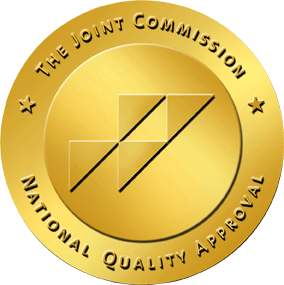Gabapentin is a prescription medication originally approved to treat seizure and nerve pain disorders. Since its approval, gabapentin has become the drug of choice for many disorders outside of its labeled indication.
Gabapentin is generally seen to be a helpful medication with few risks, but it’s still possible for abuse to occur. In addition, some believe that the drug can cause addiction to form.
Article Overview
- Gabapentin is a medication used to treat seizures and certain pain disorders.
- Gabapentin is not a scheduled medication in most states.
- Gabapentin has many off-label uses, including anxiety, ADHD, neuropathy, cough and restless legs syndrome treatment.
- Using gabapentin without a prescription or in a way other than prescribed is gabapentin abuse.
What Is Gabapentin and How Does It Work?
Gabapentin, brand-name Neurontin (among others), is an anticonvulsant medication approved by the U.S. Food and Drug Administration (FDA) to treat certain seizure disorders and postherpetic neuralgia (a type of nerve pain associated with shingles). While it does not work like opioids or benzodiazepines, gabapentin’s calming effect on nerve activity has led to expanded use in conditions like restless legs syndrome, fibromyalgia, anxiety disorders, and neuropathic pain.
Mechanism of Action
Despite its name suggesting a relationship to gamma-aminobutyric acid (GABA), gabapentin does not directly increase GABA levels in the brain the way benzodiazepines or barbiturates do. Instead, it binds to specific subunits (alpha-2-delta) of voltage-gated calcium channels in the central nervous system. By binding to these channels, gabapentin helps modulate the release of certain neurotransmitters, ultimately reducing nerve excitability. This translates to a decrease in seizure activity and nerve pain.
This Season, Give Yourself the Gift of a Fresh Start.
Whether you are struggling with addiction, mental health or both, our expert team is here to guide you every step of the way. Don’t wait— reach out today to take the first step toward taking control of your life.
Common Uses
- Seizure Control: Gabapentin is approved as an adjunct therapy for certain partial seizures.
- Nerve Pain: It is widely used to treat neuropathic pain, including diabetic neuropathy and postherpetic neuralgia.
- Off-Label Uses: These include migraines, anxiety, restless legs syndrome, and alcohol use disorder withdrawal symptoms, among others. Although not FDA-approved for these conditions, some clinicians find gabapentin beneficial in specific cases.
Because of its wide-ranging applications, gabapentin prescriptions have grown substantially in the last decade. However, increased access has also led to a rise in misuse and dependence in vulnerable populations.
Gabapentin Dosage and Administration
Gabapentin is available in multiple forms, including capsules, tablets, and a liquid solution. Patients typically begin with a low dose, which is gradually increased under medical supervision based on symptoms and how well the medication is tolerated.
Typical Dosage Ranges
- Seizure Management: Adults may start at 300 mg once or twice daily, titrating up to a total of 900–1,800 mg per day. Higher doses of up to 3,600 mg per day can be used, but only under strict medical guidance.
- Neuropathic Pain: Starting doses often range from 300 mg to 900 mg per day, divided into two or three doses, with gradual increases as needed.
- Off-Label Uses: Dosage can vary widely, depending on the specific condition and patient factors such as age, kidney function, and overall health.
Factors Influencing Dosage
- Kidney Function: Because gabapentin is excreted primarily by the kidneys, individuals with renal impairment often require reduced dosages to prevent accumulation in the bloodstream.
- Age: Older adults may be more sensitive to side effects such as dizziness or sedation, requiring smaller or less frequent doses.
- Concurrent Medications: Certain drugs, like opioids, can have additive sedative effects when taken with gabapentin, influencing the total amount prescribed.
Taking more gabapentin than prescribed or adjusting your dosage without medical supervision can significantly increase the risk of adverse effects, dependence, and potential overdose.
How Is Gabapentin Used in Addiction Treatment?
Given its neurological effects, gabapentin has found a niche in some addiction treatment protocols. Notably, it is not a frontline treatment for opioid or alcohol use disorders, but clinicians sometimes use it off-label for certain symptoms or co-occurring conditions.
Off-Label Use for Withdrawal Symptoms
Gabapentin may help alleviate:
- Alcohol Withdrawal: Some studies suggest gabapentin can reduce insomnia, anxiety, and other withdrawal-related symptoms.
- Opioid Withdrawal: Although less common than for alcohol withdrawal, some clinicians incorporate gabapentin to ease discomfort from nerve sensitivity and restlessness.
Role in Dual Diagnosis
Individuals who have both a substance use disorder and a chronic pain condition may benefit from gabapentin to manage neuropathic pain, potentially reducing the need for opioids. However, this approach requires careful monitoring to prevent misuse.
Caveats
- Limited Research: While gabapentin shows promise for managing certain withdrawal symptoms, the evidence is still evolving.
- Risk of Misuse: In some cases, people struggling with addiction may misuse gabapentin to self-medicate withdrawal or enhance the effects of other substances (like opioids).
Because of these risks, gabapentin use in addiction treatment should be carefully supervised by medical professionals who can provide comprehensive care and monitoring.
If you are struggling with Gabapentin addiction, we are here for you.
Is Gabapentin Addictive?
Compared to substances like opioids, benzodiazepines, or stimulants, gabapentin was long considered to have a relatively low potential for addiction. It is not classified as a controlled substance at the federal level in the United States (though some states have enacted regulations). However, emerging data and clinical observations show that gabapentin does carry a risk for misuse and dependence, particularly in individuals with a history of substance use disorders.
Patterns of Misuse
- To Enhance Other Substances: Some people combine gabapentin with opioids or benzodiazepines to heighten euphoric or sedative effects. This combination can be dangerous, as it increases the risk of respiratory depression and overdose.
- Self-Medication: Individuals may use gabapentin to cope with emotional distress, anxiety, or withdrawal symptoms from other substances, which can lead to an escalating pattern of misuse.
- Overuse for Pain Relief: People experiencing chronic pain might believe that higher doses of gabapentin will yield greater relief, inadvertently leading to dependence.
Signs of Gabapentin Misuse
- Taking more than prescribed
- Doctor shopping or seeking multiple prescriptions
- Using gabapentin with illicit substances
- Changes in mood or behavior when gabapentin is unavailable
- Experiencing cravings or withdrawal symptoms
Given the relatively new understanding of gabapentin’s misuse potential, many health care providers and patients remain unaware that this medication can be habit-forming. Awareness is crucial to prevent or address gabapentin dependence.
Side Effects of Gabapentin
Although gabapentin is generally well-tolerated, it can still produce undesirable effects, especially when taken at higher doses or in combination with other medications.
Common Side Effects
- Drowsiness and Fatigue: Sedation is one of the most frequently reported side effects.
- Dizziness or Lightheadedness: Many people experience dizziness, particularly when first starting the medication or after a dosage increase.
- Coordination Problems (Ataxia): Gabapentin can impair balance and coordination, increasing the risk of falls.
- Tremors: Some individuals may notice slight shaking in the hands.
- Blurred Vision: Vision changes can occur, especially at higher doses.
- Gastrointestinal Issues: Nausea, vomiting, or diarrhea may happen, though these symptoms are typically mild.
Less Common or Severe Side Effects
- Mood Changes: Anxiety, irritability, or depressive symptoms have been reported, although these are uncommon.
- Swelling in Extremities (Edema): Gabapentin can cause fluid retention leading to swelling in the hands, feet, or legs.
- Suicidal Thoughts: Like many anticonvulsants, gabapentin carries a slight risk of increasing suicidal ideation, especially in those with a history of depression.
It is important to track any new or worsening side effects and discuss them with a health care provider. Abruptly stopping gabapentin due to side effects can lead to withdrawal symptoms, so medical guidance is essential.
Gabapentin Withdrawal Symptoms
Even though gabapentin is not in the same category as opioids or benzodiazepines, physical dependence can still develop over time. Stopping gabapentin suddenly can result in uncomfortable — and sometimes dangerous — withdrawal symptoms.
Common Withdrawal Symptoms
- Anxiety and Restlessness: Psychological distress, including nervousness or agitation, is frequently reported.
- Insomnia: Sleep disturbances, such as trouble falling asleep or staying asleep, can occur.
- Nausea and Vomiting: Gastrointestinal discomfort is relatively common.
- Sweating: Excessive sweating, sometimes accompanied by chills.
- Pain Sensitivity: People who originally took gabapentin for chronic pain may notice a rebound or intensification of pain.
Duration of Withdrawal
Gabapentin withdrawal typically begins one to two days after the last dose and can last up to a week or more, depending on factors such as:
- Length of time taking gabapentin
- Dosage prior to discontinuation
- Individual health and metabolism
Tapering Off Safely
To mitigate withdrawal symptoms, health care providers often recommend a gradual taper rather than abruptly stopping. A typical tapering protocol might involve reducing the daily dose by a set amount every few days or weeks, allowing the body to adjust slowly.
If you suspect you are experiencing gabapentin withdrawal, it is vital to seek medical advice. Abrupt discontinuation can worsen withdrawal and increase the risk of complications, such as seizures in individuals who are prescribed gabapentin for seizure disorders.
Gabapentin Overdose Symptoms
While gabapentin is often seen as safer than opioids or benzodiazepines, it is still possible to overdose, particularly if it is misused or combined with other central nervous system depressants like alcohol or sedatives.
Signs of Overdose
- Extreme Drowsiness or Lethargy: An overdose can lead to excessive sedation and unresponsiveness.
- Severe Dizziness or Confusion: Disorientation and confusion can be marked in overdose scenarios.
- Slurred Speech: This can occur due to severe central nervous system depression.
- Rapid, Uncontrolled Eye Movements (Nystagmus): Overdose can cause noticeable eye movement abnormalities.
- Respiratory Depression: Breathing may become dangerously shallow or slow if gabapentin is combined with opioids or alcohol.
What To Do in Case of Overdose
If you suspect that you or someone else has overdosed on gabapentin, immediately call 911. Overdose can be life-threatening, especially if accompanied by respiratory depression. Emergency responders and medical personnel can administer supportive measures (e.g., breathing assistance, intravenous fluids) and closely monitor vital signs to stabilize the individual.
Seeking Help for Gabapentin Misuse
If you are concerned about gabapentin misuse, dependence, or addiction, professional treatment can help. The Recovery Village Columbus offers comprehensive care that may include:
- Medical Detox: A supervised environment to manage withdrawal symptoms safely.
- Therapy and Counseling: Evidence-based approaches like cognitive behavioral therapy (CBT) to address the root causes of substance misuse.
- Dual Diagnosis Care: Integrated treatment for co-occurring mental health disorders, such as anxiety or depression, which may have contributed to gabapentin misuse.
It is critical to understand that you do not have to face gabapentin dependence or addiction alone. Seeking professional guidance can prevent complications and set you on a path toward improved health.
Gabapentin Addiction Treatment
If you are considering stopping gabapentin, quitting the drug cold turkey may cause uncomfortable or even dangerous withdrawal symptoms. Instead, consult your doctor or a treatment facility to discuss tapering the drug or undergoing a medical detox.
Tapering, or slowly lowering the gabapentin dose over time, gives the body time to adjust. The tapering process can take months depending on your dose and requires regular medical follow-up. Individuals with a severe gabapentin addiction may struggle with withdrawal symptoms or cravings, leading to relapse. If this is a concern, a medically supervised detox can ensure your body rids itself of the drug without temptation.
The Recovery Village Columbus offers gabapentin detox and rehab programs, including both inpatient and outpatient options. A partial hospitalization program (PHP) and intensive outpatient program (IOP) are also available as stepping stones from inpatient to outpatient rehab.
Our facility sits on a 6.5-acre campus outside Columbus, Ohio, and offers a variety of amenities. These include:
- Art therapy
- Two gyms
- Rec room with a pool table and shuffleboard
- Yoga therapy
- Outdoor recreation areas








